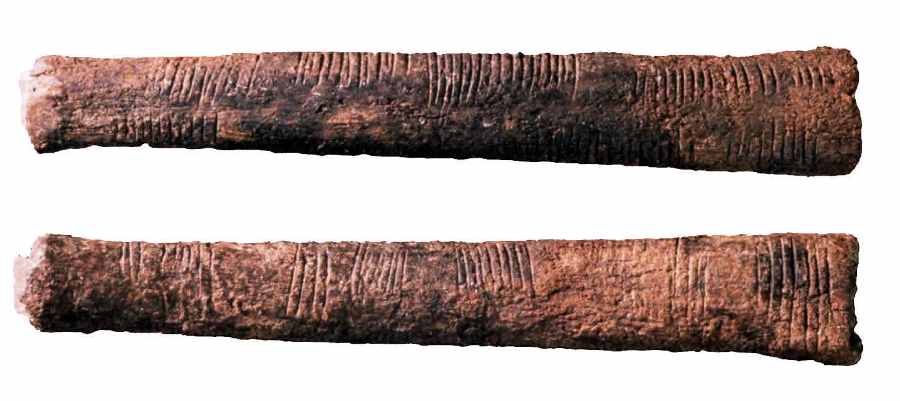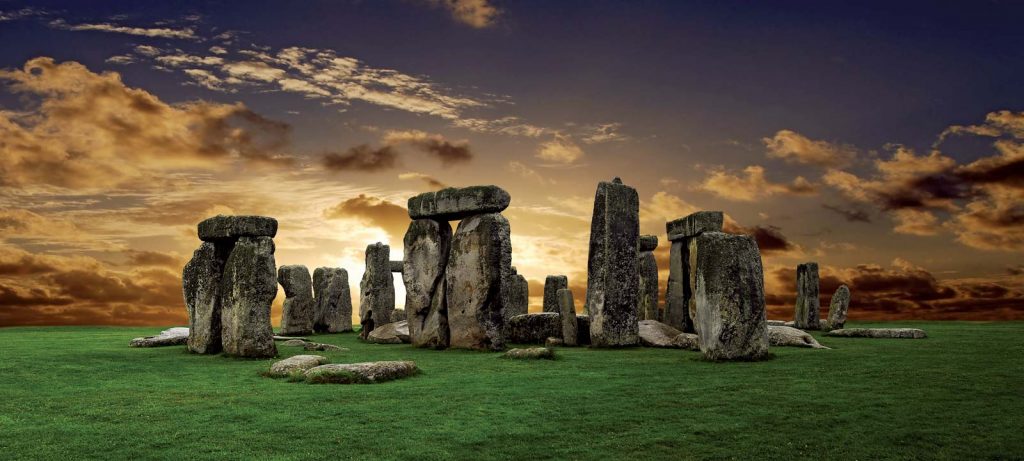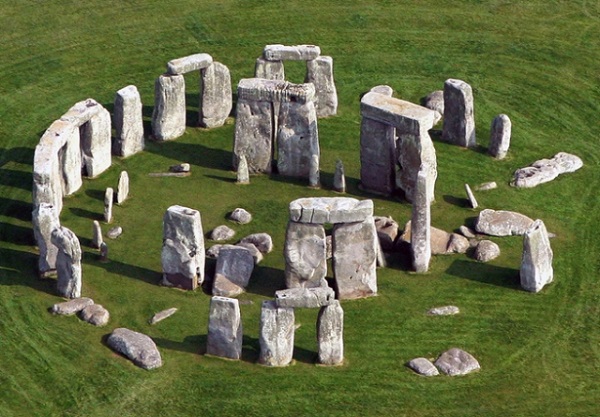For some, the allure and mystery of Stonehenge and other sites like it is a driving force of (re)discovery. Many people down the centuries have spent countless hours studying these sites in ever greater detail. Looking for the clues of meaning, ritual and how the place was constructed. We are now very confident that at least one use of the site was as an ancient astronomical calculator, measuring the motions of the moon and sun resulting in a Metonic Calendar. In other posts I have shown how this early calendar system existed across the ancient world until it was first recorded by the Babylonians. Many questions remain though. We are still not sure how the ancients were able to transport and construct such an impressive site. We have many theories, some more plausible than others, but the quest to find the answer continues. Another such question is just how did they manage to work it all out, without the aid of complex mathematical formula and simple calculators. In this post I will show how the ancients could have used simple counting and measuring systems to gather all the data required to build one of the most impressive computers of all time; Stonehenge.
Starting with simple observations.
It all starts with noticing a repeating pattern. The phases of the moon, or the yearly cycle of seasons are the obvious ones. Once the pattern has been identified the next logical step is to begin to count it. To see how many days there are between one full moon and the next.

Archaeologist have found many bones and stones with scratch marks in them that are thought to be early records of counting. Of keeping track of something. Sometimes these artefacts have an interesting number of marks in them, such as 29 and 30 which suggests to us that these are early lunar calendars keeping track of the phases of the moon. This shows that from the earliest of times, humans had an approximate figure 29.5 days between one full moon and the next. By alternating between months of 29 days and 30 days, the ancients could track the moon with a high degree of accuracy. But it was not perfect, and over time additional days would need to be added to stay in sync. The next step that is needed, is to find a way to keep records over long periods of time, and there are only so many scratches you can carve on a bone before you run out of space. You need a way to record the long count. The complexity of the recording medium has to increase. And so the development of counters, tally marks or grouping patterns is employed to make bigger numbers easier to record. But there is no record of such techniques being used in the ancient world. Another method, that is far more dynamic and useful (and less likely to survive to this day) is to tie knots into or draw marks on a line of cord. And if these knots are equally spaced then you naturally give rise to the science of metrology (the art of measuring stuff). You can now use your cord not only for counting bigger numbers, but also you can measure a stick and say that is it 20 knots long. You can also subdivide your measure into smaller units just as we do with feet and inches, or eighths of an inch etc. In turn metrology gives rise to simple arithmetic.
- Large numbers can now be aggregated together to achieve multiplication (3 feet in a yard)
- Addition and subtraction are a mater or adding or removing length
- Numbers can be subdivided into one another to achieve division
The idea that a system of measures enabled stone age calculation is supported by the fact that metrology is so evident in the construction of sites like Stonehenge, in that stones are positioned so accurately.
The days in the year
In order to get a reasonably accurate count of the days in the year, you need to pick a fixed point from which to make your observations each day. Next you place a marker on the horizon where the sun rises, and then begin counting the days until the sun arrives back at your marker. This will give you the figure of 365 days, or a length of cord with 365 knots in it. If you were to fold this cord in five you would notice that each length had 73 knots, i.e. 365 / 5 = 73. As you continue to make this observation, you notice that the sun creeps ahead of your marker a little each year, until on the 4th year the sun rises on your marker one day late, giving you 3 years of 365 days and 1 year 366, which reveals to that the true length of the year is 365.25 days. Furthermore with this figure you can make observations over a 33 year period further improving the accuracy of the length of the year to 365.2424.
Improving the accuracy of the month.
As stated above with a month length of 29.5 days you will need to include additional days every so often in order to catch up with the phases of the moon. So how can we improve the accuracy of the month? In just the same way as we did with the year, we need to count over a long period of months and take an average. But the problem with this is that the moon can appear full for up to 3 days, so you need to work out the exact moment of the full moon. The key to this is the phenomena of the lunar eclipse, as it can only occur when the sun earth and moon are in exact alignment. Lunar eclipses are not that rare and over a long period of time (33-55 years) you would notice that there is a pattern to them and that there can be either 1, 5 or 6 month gaps in-between them, with some of them being missed because they occur during the day on the other side of the earth, or because they are only partial eclipses. Eclipses happen at the point in the sky where the path of the sun and the moon cross. These two points are known as the lunar nodes, but because of the way the moon orbits us these invisible points in the sky also move around us, completing an orbit of the earth every 18.618 years. This is known as the Saros period, and is 223 lunations (lunar months) long, consisting of eight 6 month gaps, eight 5 month gaps and three 1 month gaps. Therefor by watching the lunar eclipses not only can you calculate a more accurate estimate for the length of the month, but you can also work out a predictable schedule of eclipses. In around 500BC a Babylonian Astronomer named Naburinos calculated the lunar month as 29.530614 days. The figure we use today is 29.53058885
With these more accurate figures for the solar year and the lunar month we can calculate that a year of 12 lunar months is around 11 days shorter than 1 solar year. But how can we calculate the exact difference? Well we start with 2 marked ropes, that both use the same unit of measurement to represent a day. So for example if 1 inch is equal to 1 day, you would have a rope to represent the solar year at 365.24 inches and a rope for the lunar year at 354.36 inches (12 lunar months of 29.53 days), when you lay them side by side the solar year rope will be a little longer than the lunar rope, but by how much? By dividing the excess length into the month length, we see that we can fit the excess length into the month length twice with a little over a quarter remaining. But it is also less than 1 third or 3 eighths. The next step would be to try 3 sevenths, but dividing by 7 is much more difficult.
Introducing the triangle!
One really simple way to do this is to use the properties of a right angle triangle. If I were to lay a rope of 7 units of measurement on the ground, and beside it another rope of another number, say 8 units with the left ends placed together and the over hang on the right. Then keeping the left ends together, move the longer ropes right end away from the first to create a right angle triangle, then I can use the 7 marks on the shorter rope (bottom of the triangle) and draw lines from these marks parallel to the right angle edge. These lines would then bisect the longer rope in, dividing it into 7 equal parts. This would lead to the answer that the remaining time in the year, that “11 days” that we can call the “lunar excess period”, well a lunar month is equal to 2 and 5/7 lunar excess periods or with more accuracy 2 and 7/19ths. i.e the excess period is 0.368 months long. More importantly, we can now say that a full month is 19 units long, and the excess period is 7 units long, and work with these relative lengths in whole numbers. A lunar year would then be 228 units long (12 x 19) and a solar year 235 units long (12 x 19 + 7).
Humm, this looks a little familiar.
Now if you have been reading other articles and pages on this site you might notice some of the numbers we have just arrived at pop up in other places. 19 and 235 to be specific. That’s right, they are the number or years and the number of months in a Metonic cycle respectively.
The Metonic cycle is a little more difficult to spot than the Saros cycle. It’s chief characteristic is that a full moon will occur in the same position in the sky every 19 years, with the sun also in the same position in the sky as 19 years previously. To observe this you have to be making very detailed notes over the course of 19 or more years. However having already noticed the need to include additional months every two and a half years or so, and having discovered the Saros cycle because eclipses are pretty noticeable, it is possible then that Metonic cycle was discovered numerically. There is a very interesting relationship between the Saros cycle of 18.618 years and the Metonic cycle of 19 years. If you start counting the Saros and Metonic cycles on the same day, then the Saros cycle will finish exactly 12 lunar months (1 lunar year) before the Metonic cycle. It is almost as if the entire solar system was designed to run like some kind of clockwork. It certainly seems that the timings of all these celestial bodies is too good to be a coincidence.
Coming back to eclipses
The measuring of eclipses really is key to all this. Another important piece of the puzzle is working out how fast the lunar nodes move around us. Knowing that there is an eclipse tells you exactly where the lunar node is, and knowing there are 2 eclipse seasons in a solar year allows us to work out that the eclipse year is 346.62 days long. That is the time is takes for the sun to move from a lunar node, all the way around the orbit until it meets the same node again.
With this understanding of the eclipse year we can now use the same triangle technique we used above to work out how much shorter the eclipse year is than the solar year, which turns out to be around 18 days and 5/8th of a day (18.652 days, close to the true value of 18.618…wait, haven’t we seen that number before too? It’s the Saros period in years! ). The eclipse year it’s self is 346 days and 5/8th of a day which when added to the difference results in a year of 365 days and 1/5th of a day, only slightly shorter than the figure of 365.2424 days for the solar year. With a little more work it is entirely possible that the more accurate figure of 18.618 could have been arrived at. If we now use the same unit of measurement that we used to express the lunar year as 19 units and the lunar excess of 7 units, then this new figure of 18.618 can also be expressed as 12/19 of a lunar month or, 1 unit (19 units divided by 12 months = 1.5833 divided by 19 = 0.083333 times by 12 = 1) , what this means is that a unit of measure can be developed that encapsulates all of these properties. If you were to set a standard length as one unit, then subdivided that into 7 sub-units, then 19 sub-units world made a length that represented the lunar month/year and the excess, and the 18.618 figure which we will call the node day can be represented with 12 sub-units. If our standard unit is at the correct scale then 12 such sub-units are equal to the historical measure of the royal cubit and 19 sub-units are equal to the Drusian step.
It is believed though not universally that there was a unit of measure in the ancient world and it known as the megalithic Yard. It was discovered by Alexandra Thom in the 20th century using statistical analysis of measurement data collected at over 150 stone circles across Scotland, England, Wales and Brittany. If Thom was correct then the megalithic yard is very very close to the Drusian step, and even more interestingly the base unit 7 7ths is the English foot. The implications of this are that the English foot could have been developed way back in prehistory, and that almost all historical measures are based on the English foot.

Along with observational landscape alignments, we now have all the data required to construct Stonehenge and the other ancient astronomical stone circles. And this has been the problem for a long time. People just cant wrap their minds around how the ancients calculated it all. What I have done here is show how it could be done without the need for complex mathematics, only marked string, sticks and a right angle. But other problems arise from this. How was a standard unit of measure shared across the ancient world without introducing error for example? These are questions for another post. For now, I hope you can see that with the right understanding, Stonehenge really is not that hard to understand. The Druidcraft calendar takes much of it’s inspiration from Stonehenge in that it tracks both the saros and metonic cycles just as Stonehenge can. It is basically, a personal mini Stonehenge in that regard, capable of recording almost all the same information.

Leave a Reply
You must be logged in to post a comment.